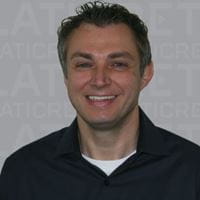Archive
Tagcloud
A Quick Look: 9 Major Additions and Revisions to the 2017 TCNA Handbook
08-09-2017
As you know, the TCNA (Tile Council of North America) just released their 2017 Handbook.
 Written By: Art Mintie, Sr. Director of Technical Services, LATICRETE
Written By: Art Mintie, Sr. Director of Technical Services, LATICRETEAs you know, the TCNA (Tile Council of North America) just released their 2017 Handbook. The major additions / revisions to the 2017 TCNA Handbook are as follows:
1. Added the following language to the Setting Materials Guide under Latex / Polymer Modified Portland Cement Mortar:
"Cure times may also be extended with narrow grout joints and when high performance grouts such as those meeting ANSI A118.3, A118.5 and A118.7 are used. When one or more of these conditions exists, delaying grouting will allow better evaporation of excess moisture".
2. Added a new section to the Membranes selection Guide - "Considerations when Using Membranes"
Added notes on how membranes can produce 'hollow-sounding tiles', can extend mortar cure times and may have limits on substrate moisture.
3. Added 2 NEW methods for exterior Roof Decks or Balconies using "Structural Ribbed Self-Supporting Boards" (SRSB) - [a.k.a. TI Pro-Board]
Method F105-17 – for ceramic tile applications
Method F105 –17 STONE – for stone installations
A section on SRSB was added to the section within "Additional Products Used in Tile Installation"
LATICRETE has several details / installation methods for these applications. Contact LATICRETE Technical Services for additional information.
4. Updated and Added New Sections to the "Substrate Requirements"
Expanded section on "Disparity between concrete flatness tolerances based F-numbers and the 10-foot straightedge method"
Added a section on "Substrate flatness tolerance and framed wall construction".
Added a section on "Equivalent Gauge" Steel Framing for Drywall (Commonly referred to as "EQ" Drywall Studs)
Made various updates to better align with ANSI standards
5. Updated "Lighting and Tile Installations" & "Visual Inspection of Tilework" sections:
Expanded section deals with the causes of exaggerated shadows even with properly installed tiles. In addition, information on how to conduct a visual inspection is better defined and bundles together the recognized standards that affect the visual appearance of tile installations.
6. Glass Tile adhesive mortar bond coat color revision to methods that allow Glass Tile as a finish option:
Revised language to read "Bond coat color will impact the final appearance of translucent glass tile. Specifier shall confirm that bond color is acceptable".
7. Method W248-17 now allows for glass tile as a finish – this method utilizes ASTM C1648 Compliant Glass Mat Water-Resistant Gypsum Backer Board (e.g. National Gypsum eXP Interior Extreme Gypsum Panels, USG Mold Tough)
8. Updated Method P602-17 to include some of the following items:
Penetrating colloidal silicate (e.g. Aquron CPSP) can now be applied to the concrete tank prior to the application of cementitious waterproofing membrane to densify the pool tank.
Alternate detail at the coping that depicts partially tiled system at the water line with plaster application below.
9. Updated / Expanded sections on Movement Joints – EJ171:
Location of interior movement joints are no longer confined to a range – now a maximum spacing limit is defined with no minimum spacing limit (e.g. Interior applications - maximum 25' [7.6m] in each direction, Interior above ground concrete slab substrates – maximum of 12' [3.6m] in each direction, Interior tile work exposed to direct sunlight or moisture – maximum 12' [3.6m] in each direction, etc…)
Section now includes formula examples for calculating placement and width of movement joints – for use by Project Design Professionals to calculate project specific movement joints placement and design.
Elimination of Class 12 Sealant
Shore A hardness for traffic applications has been reduced from 35 to 25 (minimum)
Vertical movement joint section
Revised detail EJ171 J – to depict placement of movement joints on vertical applications and where they intersect with floors, changes of plane, interior and exterior notes added
New expansion joint details:
EJ171 K – Movement Joint in Tile Backer Board (walls)
EJ171 L – Generic Movement Joint with Backer Board (walls)
There are other many other 'minor' changes throughout the handbook, so be sure to read through!
If you have any questions on how to use LATICRETE products using these new methods, please contact our Technical Services Department via our live chat feature at laticrete.com, by phone at 1-800-243-4788 or email us at technicalservices@laticrete.com.
